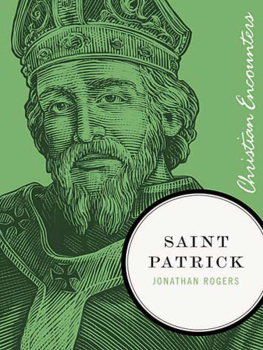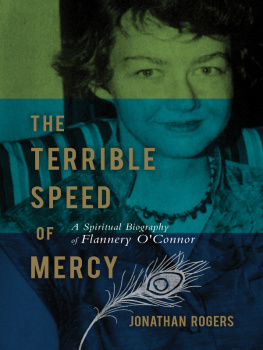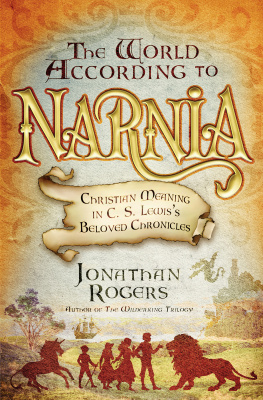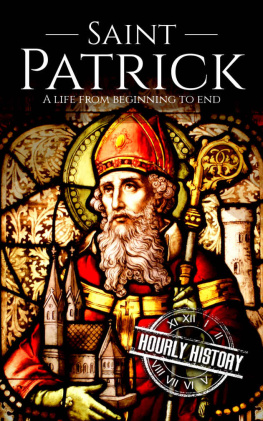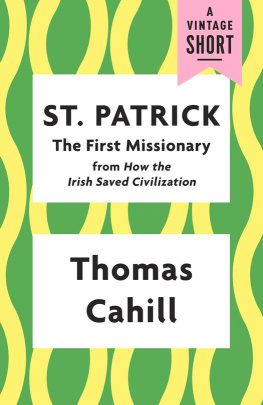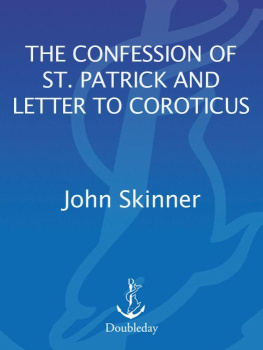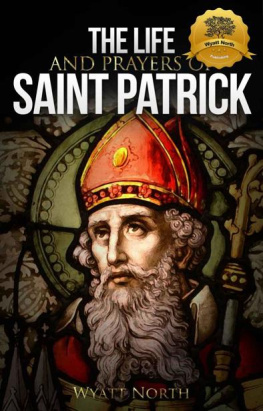CHRISTIAN ENCOUNTERS
SAINT
PATRICK
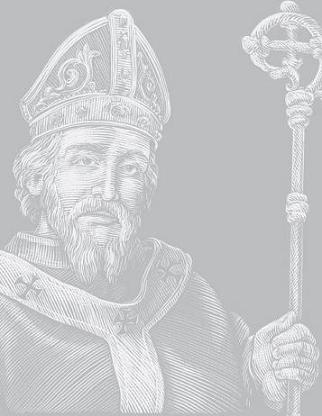
CHRISTIAN ENCOUNTERS
SAINT
PATRICK
JONATHAN ROGERS

2010 by Jonathan Rogers
All rights reserved. No portion of this book may be reproduced, stored in a retrieval system, or transmitted in any form or by any meanselectronic, mechanical, photocopy, recording, scanning, or otherexcept for brief quotations in critical reviews or articles, without the prior written permission of the publisher.
Published in Nashville, Tennessee, by Thomas Nelson. Thomas Nelson is a registered trademark of Thomas Nelson, Inc.
Published in association with Eames Literary Service, LLC, Nashville, Tennessee.
Thomas Nelson, Inc., titles may be purchased in bulk for educational, business, fund-raising, or sales promotional use. For information, please e-mail SpecialMarkets@ThomasNelson.com.
Unless otherwise indicated, Scripture quotations are taken from the HOLY BIBLE: NEW INTERNATIONAL VERSION. 1973, 1978, 1984 by International Bible Society. Used by permission of Zondervan Publishing House. All rights reserved.
Scriptures marked ESV are taken from THE ENGLISH STANDARD VERSION. 2001 by Crossway Bibles, a division of Good News Publishers.
Scriptures marked KJV are from the KING JAMES VERSION (public domain).
Library of Congress Control Number: 2009943983
ISBN: 978-1-59555-305-8
Printed in the United States of America
10 11 12 13 HCI 1 2 3 4 5 6
For Marvin, Tim, Hamilton, and Topper.
The best mirror is an old friend.
CONTENTS
Appendix A: St. Patricks Writings
The Confession
Appendix B: St. Patricks Writings
The Letter
A ccording to legend, the man we know today as Saint Patrick was embarking on a ship bound for Ireland, when a leper accosted him. The outcast begged the holy man to let him come on the journey. Ever compassionate, Patrick was willing to let him come aboard. But the sailors and passengers would have none of it. Not only was the ship already full, but the leprous man would be to them all at once an encumbrance and a horror.
Patrick offered a solution that was both surprising and entirely characteristic of the saint of legend. He happened to have with him a stone altar, a gift from the pope himself, which he threw into the sea, and there it floated. He then instructed the leper to sit on the altar. When the ship sailed, the altar sailed beside it, all the way across the Irish Sea. When the vessel landed in Ireland, so did the leper and his makeshift boat. Patrick praised God, and the sailors and passengers stony hearts were transformed into hearts of compassion and charity.
This story is typical of the body of legend that grew up around Saint Patrick. The saints compassion for the downtrodden is on full display. A former slave himself, Patrick was more attuned than mosteven most saintsto matters of social justice. But even more uniquely Patrician is the sense of holy mirth that pervades the story. Its funny, that picture of a man riding a stone altar across the sea. There is more than simple humor happening here, however. This is divine comedy. In a comic reversal, the leper enjoyed a first-class berthborne along on the mercy seat, you might saywhile those who rejected him look on from the crowded deck.
The sheer volume of legends associated with Patrick there are scores, even hundreds of themis evidence of just how beloved he has been through the centuries. The most familiar images and tropes associated with Patrick tend to come from legends rather than the historical record. For example, Patrick did not run the snakes out of Ireland. Writing two hundred years before Patricks time, the Greek geographer Solinus remarked that Ireland was free of snakes. There is no record of Patrick using the shamrock to teach the Irish about the Trinity. Neither did he have any dealings with leprechauns.
A remarkable number of the Patrick legends are comic, portraying the saint as a man you would enjoy being around. Consider, by contrast, Patricks contemporary, Saint Augustine, with his towering intellect and moral and theological precision. You cant help respecting the man, but you wouldnt necessarily want him at your Christmas party.
Of the Patrick legends, nineteenth-century Irish poet Aubrey de Vere wrote, Their predominant character is their brightness and gladsomeness.
At times Patricks comic reversals can seem cruel to modern sensibilities. For example, when one of Patricks disciples laughs at a blind man who falls down as he runs to be healed, the saint heals the sightless man and blinds the scoffer.
Some of the comic reversals in the Patrick legends are truly outlandish. In one tale, Patrick and his disciples were passing by a sepulchre of wondrous length, so big that Patricks followers refused to believe that any man could be buried there. Patrick, to prove that there was indeed a man in the tomb, prayed to bring him back to life. Then stood one before them horrible in stature and in aspect. This terrifying giant broke down, weeping at the sight of Patrick, the man who had released him from the torments of hell. He then begged to join Patricks retinue, but the saint refused him, fearful that no one could stand to look on such a terrifying figure as that man of gigantic stature. He did, however, invite the giant to believe in the triune God and thus escape hell permanently. The giant believed, was baptized, died again, and was buried, this time to rest in peace.
The monstrous, the horrible, the barbaric, folded into the love of a God who laughs. The terrible giant weeping for joy at the sight of the saint who released him from his torments. This is the divine comedy that shaped the career not just of the Patrick we know from legend, but the one we know from the historical record.
That historical record is admittedly brief. Everything we can reliably know of Patrick the man comes from two documents that, together, are fewer than twenty pages in length. Both were written by Patrick himself, late in his life. Though both contain autobiographical elements, neither is, properly speaking, an autobiography.
Patricks Confession (also known as his Declaration) is a document of self-defense. After serving as a bishop in Ireland for an unspecified number of years, Patrick was charged with some wrongdoing or incompetence and was required to answer to his superiors back in Britain. He didnt spell out the charges against him (his original audience, after all, would have been well acquainted with the accusations), but they were most likely related to a perceived conflict between his mission to the unconverted Irish barbarians on the one hand, and his duties to the existing Christian community on the other. By definition, a bishop was responsible specifically for the believers under his authority. The local heathens didnt figure into the equation, except perhaps as enemies to the work of the Church. A missionary bishop would have been an utter noveltyand therefore very much in need of defending.
The second foundational document for the study of Patricks life is his Epistle to the Christian Subjects of the TyrantCoroticus. If Patrick was on the defensive in his Confession, in this second text he was very much on the offensive. The Epistle, known also as A Letter to the Soldiers of Coroticus and St. Patricks Epistle to Coroticus, is a letter of excommunication for a nominally Christian warlord named Coroticus, who murdered, kidnapped, and enslaved a group of Patricks newly baptized Irish converts (the anointing chrism, he wrote, was still gleaming upon their foreheads). The letter burns with a righteous and very personal anger that is the flip side of the tenderness he felt for his Irish flock.
Next page
